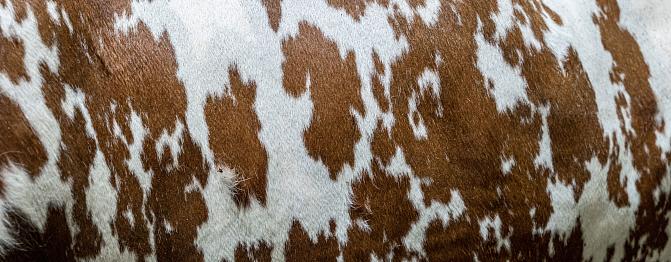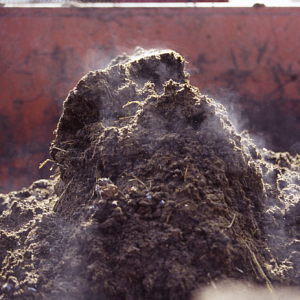Manure properties depend on animal species, feed, growth, reporoduction, and metabolism as most of the surplus materials from feed intake are excreted as faeces and urine. Manure contains a lot of nutrients, such as nitrogen and phosphorus, but also carbon-rich compounds. Manure properties are also affected by bedding materials and other choices made in manure management and potential processing.

Manure
On this page
Where is manure produced?
Livestock manure is a mixture of faeces and urine excreted by the animals. Depending on the housing technology, it may also include bedding materials and cleaning waters.
Slurry (liquid manure) is produced when cleaning waters of the animal house are mixed with feaces and urine and little bedding is used. The dry matter content of slurry is low, and it flows by gravity and can be pumped. Solid manure can be stacked on a heap due to its higher dry matter content. No cleaning waters are mixed into it. Depending on the amount of bedding material and the housing technologies used, solid manure is divided into different manure types. Farmyard manure and deep litter contain a high amount of bedding material and all urine is absorbed to it. The difference between them is the manure removal frequency. While farmyard manure is regularly removed from the housing unit, deep litter is only removed few times per year. Dung is also a solid manure type, but it is produced simultaneously with separately collected urine. The use of bedding material is lower and only little urine is absorbed to it.
Grazing animals excrete part of their excreta to pastures and this share is not included into the traditional manure management chain of removal from housing, storing and application on fields.
Typical uses of manure
Manure is mostly used as a fertilizer and organic soil amendment on fields. It can also be processed to produce e.g. biogas and more concentrated fertiliser products. Even in biogas plants, manure nutrients are not “lost”, but the digestate is applied on fields as such or after post-processing. A small amount of manure is also used in a processed form in landscaping and gardening.
Manure management and use is regulated by EU Nitrates Directive and related national legislation.
Potential uses
In principle, different valuable components can be separated from manure e.g. to be used in chemical industry. The potential to reach more environmentally and economically sound manure use via different processing technologies is being intensively studied. In 2017, 5% of Finnish manure is being processed.
Manure properties


